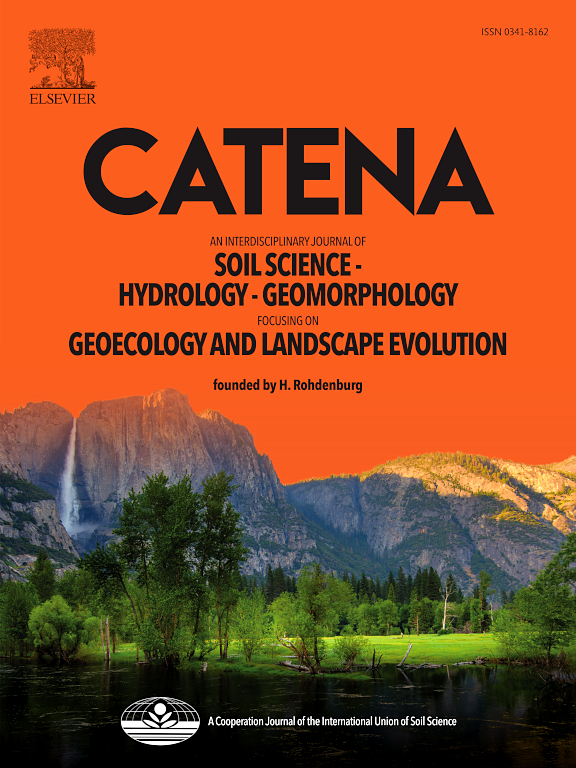Permafrost as a source of mineral weathering bacteria: Implications of active layer thickening on James Ross Island, Antarctica
IF 5.4
1区 农林科学
Q1 GEOSCIENCES, MULTIDISCIPLINARY
引用次数: 0
Abstract
Studying permafrost in Antarctica provides insights into climate history, soil and rock structure, and a unique biodiversity with potential impact on ecosystems. Although a great deal of effort has been devoted to the microbiological composition of permafrost soils, the objective pursued in this study is, for the first time, to examine soil and rock samples collected from a 350 cm deep core drilled near the Johann Gregor Mendel Czech Antarctic Station on the Ulu Peninsula of James Ross Island, to study the effect of geochemical properties on microbial composition and diversity and vice versa. We collected samples from the profile starting on the ground surface down to 350 cm depth and correlated information from metagenomic 16S rRNA gene analysis and geochemical data. The 80-cm-thick active layer had a distinct bacterial composition different from the Pseudomonadota-rich permafrost layer, with Actinomycetota, Acidobacteriota, Chloroflexota, and Verrucomicrobiota being the prevalent phyla. Throughout the core, the higher bacterial diversity was positively associated with the sand fraction and intensive weathering. The highest identified diversity in the deepest part of the active layer (transient active layer) suggests that the bacteria here have been gradually cryopreserved, possibly accumulating from the upper layers. In summary, the identified interface between the active layer and permafrost, as well as the transition within the permafrost from Holocene marine sediments to underlying Cretaceous sedimentary rocks (deeper than ∼ 260 cm), had the greatest influence on the bacterial composition. Decadal records of soil temperature and active layer thickness predict more significant interactions in the future between bacterial communities in the current active layer and mineral weathering bacteria that are typical of permafrost.
求助全文
约1分钟内获得全文
求助全文
来源期刊

Catena
环境科学-地球科学综合
CiteScore
10.50
自引率
9.70%
发文量
816
审稿时长
54 days
期刊介绍:
Catena publishes papers describing original field and laboratory investigations and reviews on geoecology and landscape evolution with emphasis on interdisciplinary aspects of soil science, hydrology and geomorphology. It aims to disseminate new knowledge and foster better understanding of the physical environment, of evolutionary sequences that have resulted in past and current landscapes, and of the natural processes that are likely to determine the fate of our terrestrial environment.
Papers within any one of the above topics are welcome provided they are of sufficiently wide interest and relevance.
 求助内容:
求助内容: 应助结果提醒方式:
应助结果提醒方式:


